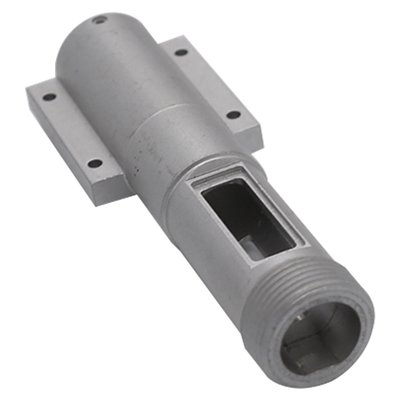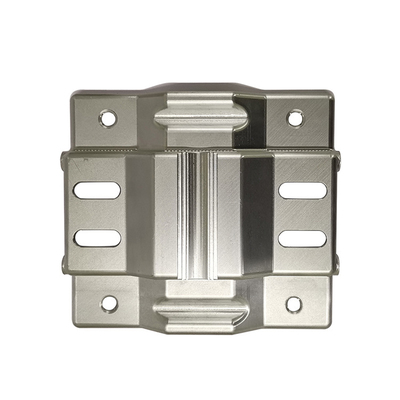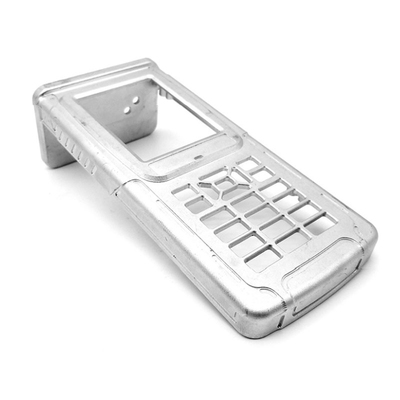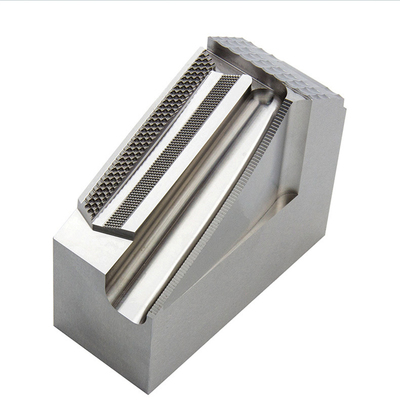Analysis of Problems and Strategies in Vertical Upward Welding of Stainless Steel
The limitation of hexavalent chromium prevents the use of flux cored wire (FCAW) in most places, and gas metal arc welding (GMAW) performs poorly in both directions of groove welding. So, what should manufacturers do to get better performance and reliability?
From material handling to cutting and welding, stainless steel (SS) usually brings some manufacturing difficulties. Let us quickly review the reasons for making stainless steel stainless.
There are several different SS groups, but usually carbon steel becomes a kind of stainless steel, in which chromium is added at a minimum of 10.5% by weight. The most common version of stainless steel is austenitic SS, which contains approximately 8% by weight of nickel. This improves corrosion resistance, serves as an austenite catalyst, and greatly improves toughness for low-temperature applications.
The austenitic SS series is classified as 18% chromium/8% nickel material, which can effectively resist environmental or chemical oxidation (rust) and corrosion. The choice of a special type of SS depends on its ability to provide the required mechanical properties under the conditions of use. These vary depending on the product concentration, operating temperature range or viscosity. Abrasion can greatly reduce the effectiveness of certain grades or types of stainless steel as a function of operating temperature.
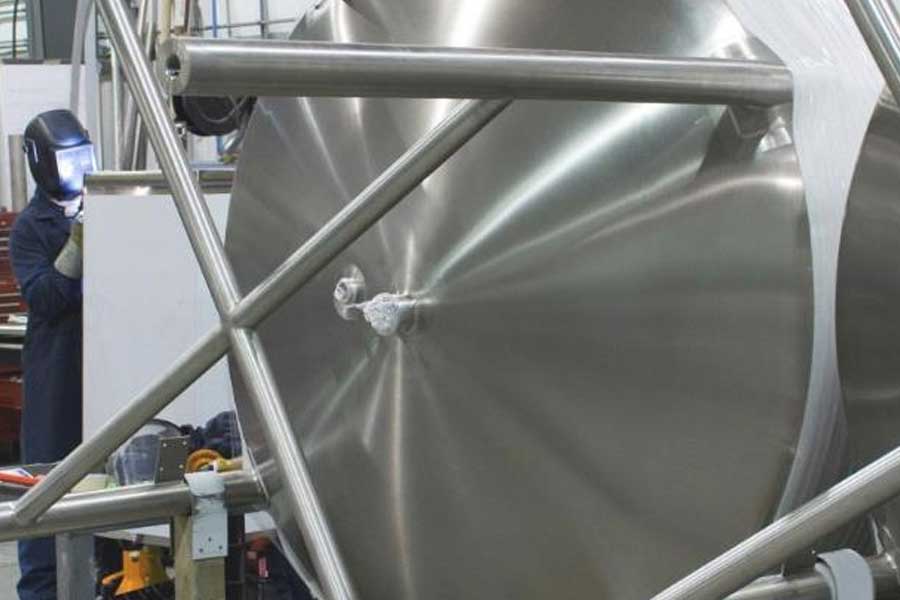
Regarding welding, the addition of chromium and nickel and other alloying elements is also the reason why welding SS is more challenging. These elements change the dynamics of the weld pool, one of which is the fluidity, which is caused by the arc energy transfer and changes in the surface tension of the molten weld pool. For these reasons, vertical upward welding (3G/F) or vertical downward welding becomes more challenging.
The primary goal of SS welding manufacturing is to find a suitable filler metal to meet the expected service conditions.
If necessary, the use of shielding gas should be considered under the required conditions of use. Assuming that all these conditions are met, the next goal is to use the welding process and filler metal to enable you to perform defect-free welding and optimize the deposition rate of the welding process.
For most applications, gas tungsten arc welding (GTAW), GMAW or FCAW for manual welding processes will be selected. GTAW produces some of the highest quality welds, but they are very slow in terms of deposition rate and travel speed, so we will not consider using them for the time being. Of course, for the purpose of simplifying equipment, on-site maintenance welding may also use shielded metal arc welding (SMAW), but we will focus on in-house manufacturing.
Since SS has a variety of chemical compositions far exceeding that of carbon steel, the chemical composition that is effective for one grade may not work for another. The specific grade of SS substrate required by the use conditions requires you to select filler metals that match or exceed the required mechanical properties.
Common problems of vertical downward welding are poor appearance of the weld bead, excessive spatter, poor weld toe overlap, lack of fusion and wash-out (or recessed) appearance. You can still create well-structured, leak-proof welds on thin materials, but overall, the sum of these variables may cause manufacturers to seek other solutions. Keep in mind that for materials with a thickness of less than 3/16 inch, vertical downward welding is the most common technique.
If the part you want to weld cannot be safely positioned, so the weld is in a horizontal or horizontal position (1G/F or 2G/F), 3G/F (vertically upward) may be the only option.
For thick-walled profiles, the best performance is to use GMAW or FCAW to weld vertically upwards. Compared with GMAW, the use of FCAW for welding does produce more smoke and smoke, but it does produce high-quality welds and a good deposition rate. Many companies use FCAW to weld SS and adopt appropriate engineering control measures to ensure the safety of welders. However, please consult your safety department and local industrial hygienist to ensure proper safety measures are taken and OSHA requirements are complied with.
Taking all factors into consideration, this makes GMAW an ideal process for SS welding. GMAW has two choices of wire selection: solid wire or metal core wire. For single-wire applications, the most common industry practice is to use 0.035-0.045-in.-dia. Solid line, 98% argon/2% carbon dioxide protective gas mixture and short-circuit transmission mode. You will need a constant voltage welding power supply with a steep slope and adjustable inductance to minimize welding spatter and allow greater molten pool fluidity when welding in the 3G/F position. This is essential for using this weld metal transfer mode to produce high-quality welds and beautiful appearance.
If your equipment can be welded by pulse transmission, you can use metal cored wire. Generally, the welding wire uses a 90% argon/10% carbon dioxide shielding gas mixture. You will want to use a diameter of 0.045 inches or 0.052 inches. The electrode and weld are in pulse mode.
In some applications, based on the material thicknesses discussed previously, the pulse transmission mode provides good results for other vertical upward welding through vertical downward welding. Depending on the manufacturer of the welding equipment and its pulse welding waveform, the quality and chemical properties of the filler metal, and the SS grade used, you must perform some experiments to find the welding parameters that produce the best results.
Link to this article: Analysis of Problems and Strategies in Vertical Upward Welding of Stainless Steel
Reprint Statement: If there are no special instructions, all articles on this site are original. Please indicate the source for reprinting:https://www.cncmachiningptj.com/,thanks!
 Sheet metal, beryllium, carbon steel, magnesium, 3D printing, precision CNC machining services for heavy equipment, construction, agriculture and hydraulic industries. Suitable for plastics and rare alloys machining. It can turn parts up to 15.7 inches in diameter. Processes include swiss machining,broaching, turning, milling, boring and threading. It also provides metal polishing, painting, surface grinding and shaft straightening services. The production range is up to 50,000 pieces. Suitable for screw, coupling, bearing, pump, gearbox housing, drum dryer and rotary feed valve applications.PTJ will strategize with you to provide the most cost-effective services to help you reach your target,Welcome to Contact us ( [email protected] ) directly for your new project.
Sheet metal, beryllium, carbon steel, magnesium, 3D printing, precision CNC machining services for heavy equipment, construction, agriculture and hydraulic industries. Suitable for plastics and rare alloys machining. It can turn parts up to 15.7 inches in diameter. Processes include swiss machining,broaching, turning, milling, boring and threading. It also provides metal polishing, painting, surface grinding and shaft straightening services. The production range is up to 50,000 pieces. Suitable for screw, coupling, bearing, pump, gearbox housing, drum dryer and rotary feed valve applications.PTJ will strategize with you to provide the most cost-effective services to help you reach your target,Welcome to Contact us ( [email protected] ) directly for your new project.

- 5 Axis Machining
- Cnc Milling
- Cnc Turning
- Machining Industries
- Machining Process
- Surface Treatment
- Metal Machining
- Plastic Machining
- Powder Metallurgy Mold
- Die Casting
- Parts Gallery
- Auto Metal Parts
- Machinery Parts
- LED Heatsink
- Building Parts
- Mobile Parts
- Medical Parts
- Electronic Parts
- Tailored Machining
- Bicycle Parts
- Aluminum Machining
- Titanium Machining
- Stainless Steel Machining
- Copper Machining
- Brass Machining
- Super Alloy Machining
- Peek Machining
- UHMW Machining
- Unilate Machining
- PA6 Machining
- PPS Machining
- Teflon Machining
- Inconel Machining
- Tool Steel Machining
- More Material

